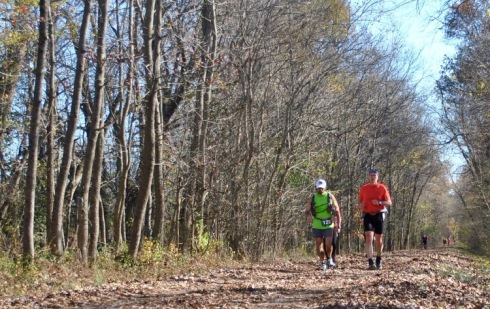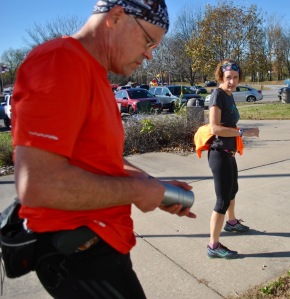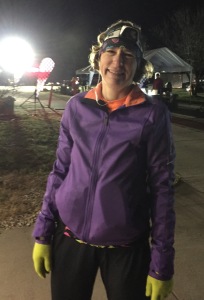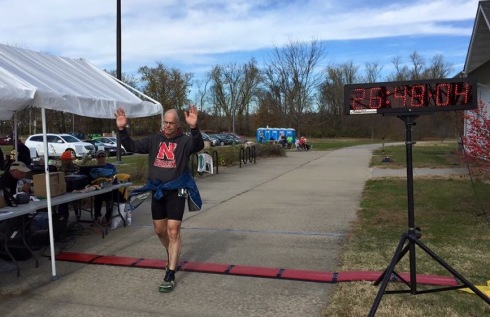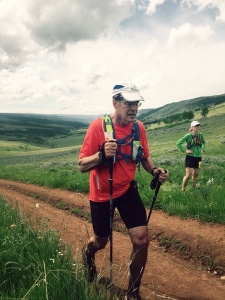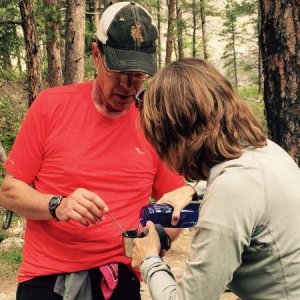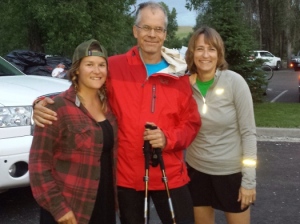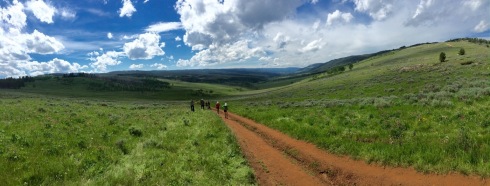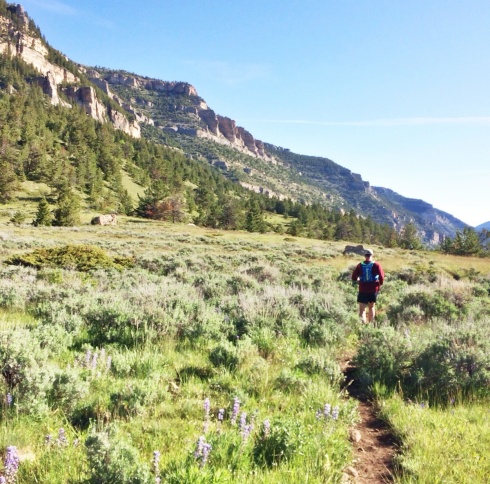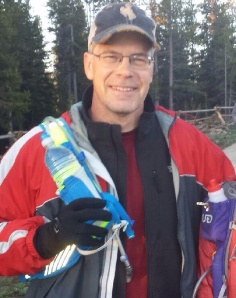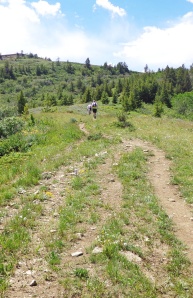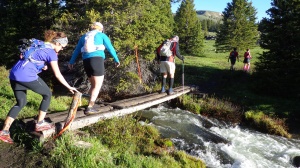
Since I started running ultramarathons about 8 years ago, I’ve continued to push my boundaries, progressing to more difficult courses and longer distances. After successfully completing a 100-miler on a friendly (read: relatively flat) Midwestern course, I really wanted to tackle a mountain 100-miler.
In February 2021, I was finally feeling better after struggling with plantar fasciitis for 3 years. On a lark, I signed up for the Mountain Lakes 100, which takes place near Mount Hood in Oregon. I’d been on the wait list before, and I hadn’t made the admissions list. When the names were drawn this winter, I was number 6 on the wait list! I pretty much knew I’d be in.
The Mountain Lakes course lies south of Mount Hood and much of it is run on the Pacific Crest Trail. (This year’s course was a bit different than it had been in the past, being rerouted following colossal fires the year before.)
The course features 11,000 feet of vertical and has a 30-hour final cutoff. It starts on Saturday at 8 am, and you have until Sunday at 2 pm to finish. Most of the course is single track, and several times, you pass one of Oregon’s most beautiful places, Timothy Lake.
The race itself is the payoff for months of hard work. Since getting the good news in February, I’d put in more than 1,000 miles of running, the vast majority on trails.
I finished the 54-mile Ozark Foothills trail race outside of St. Louis in April, logging 15 hours in the rain, slip-sliding along the muddy trails – and cracking or breaking a rib in a fall. As it turns out, the extra time in the rain was good preparation.
My wife, Barb, and I found new trails all over Iowa. We’d run some on Saturday, enjoy a night of camping, then do them all over again on Sunday.
In July, for the first time ever, I logged more than 200 miles in a month. I slogged through back-to-back long runs, night runs, early morning runs. I ran hill repeats, trying desperately to match the vertical I’d find in the Cascade Mountains outside Portland. I practiced my race nutrition, and I practiced with new poles.
By September, I was as ready as I could be.

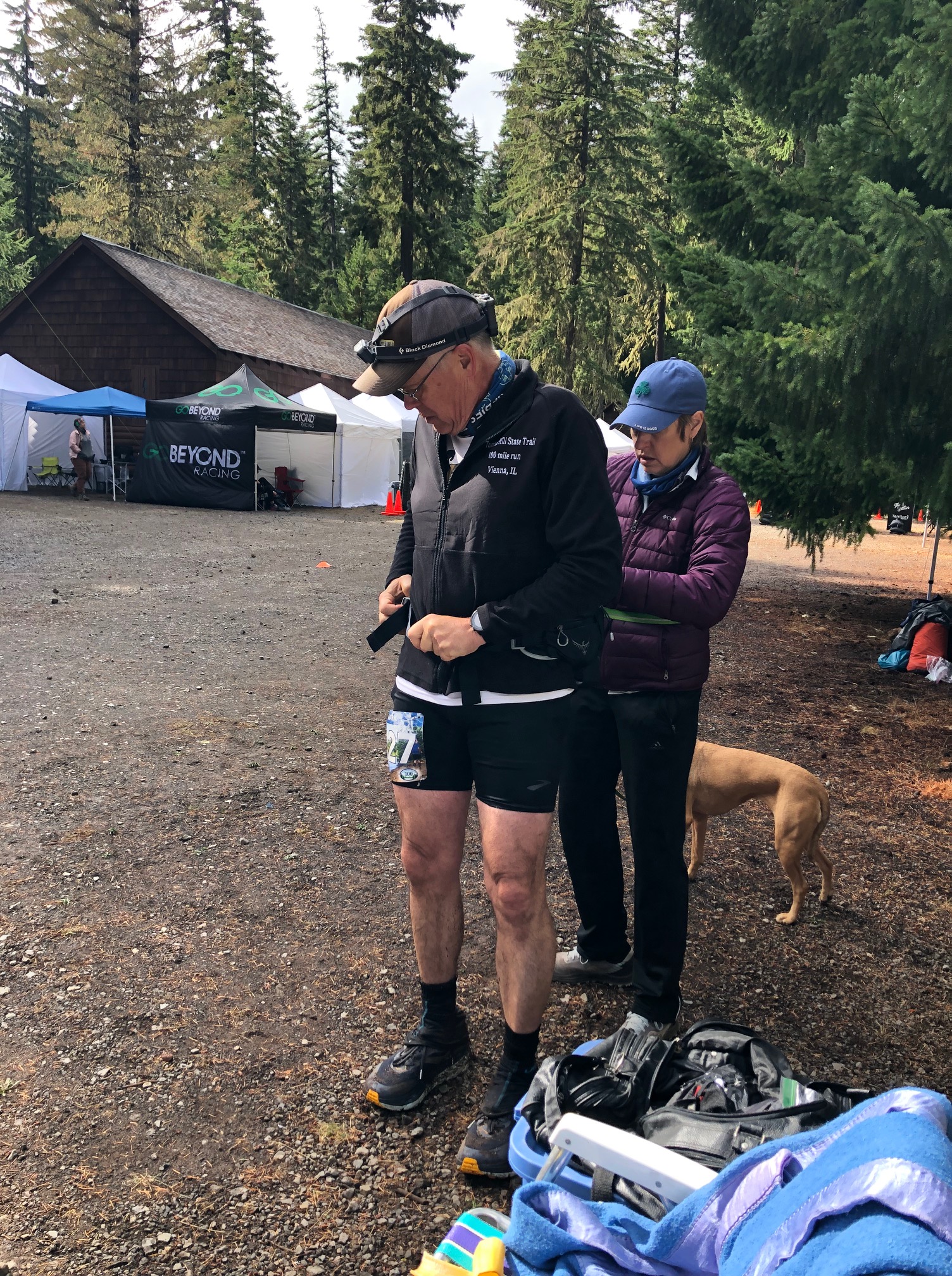
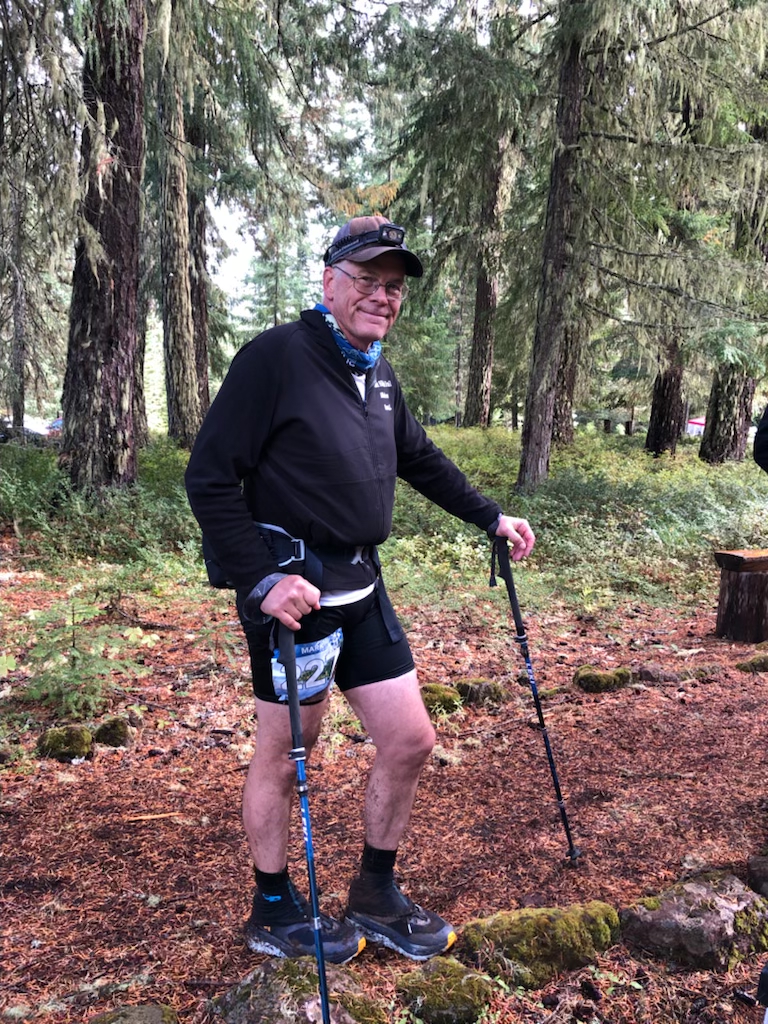
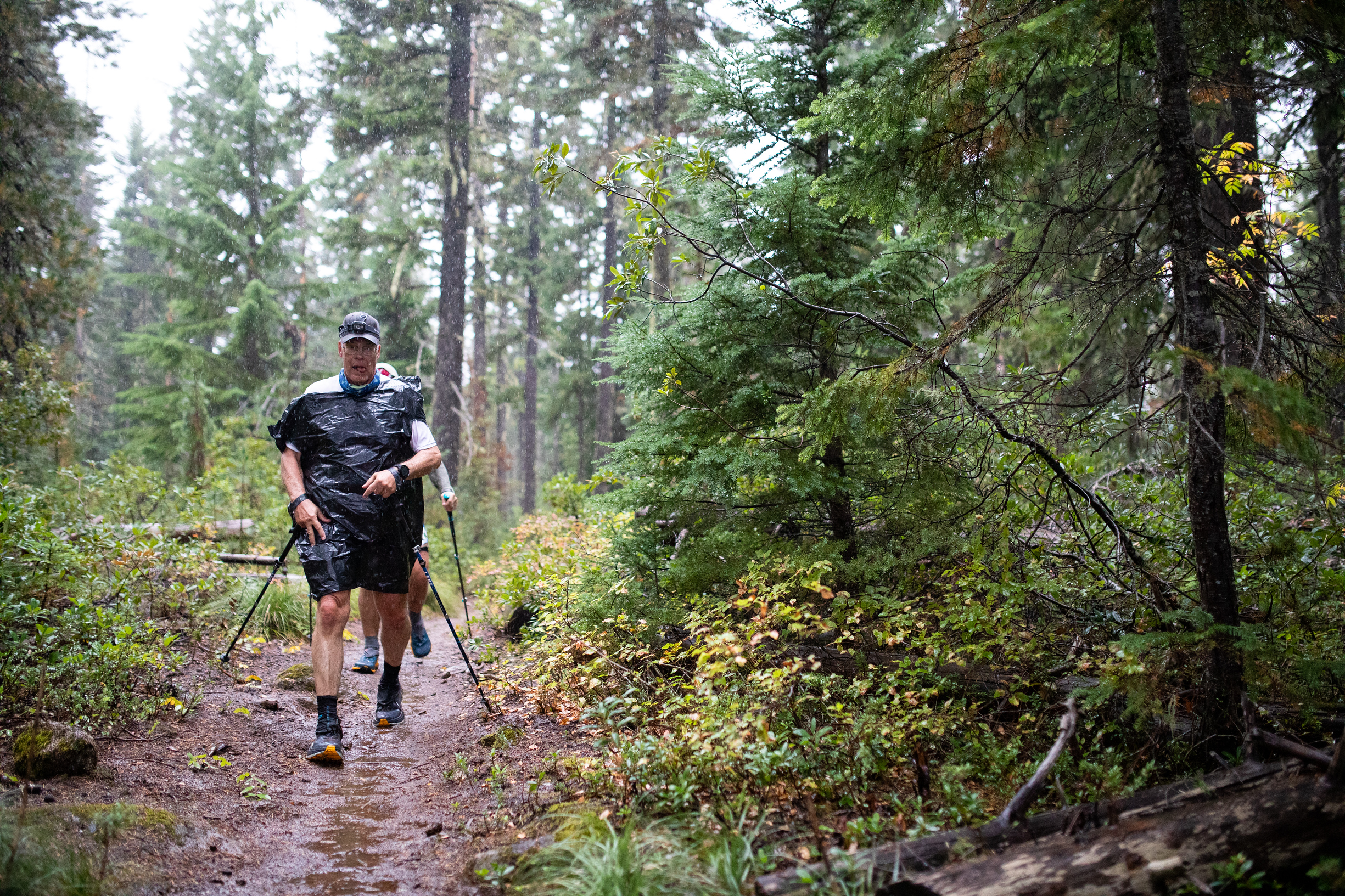
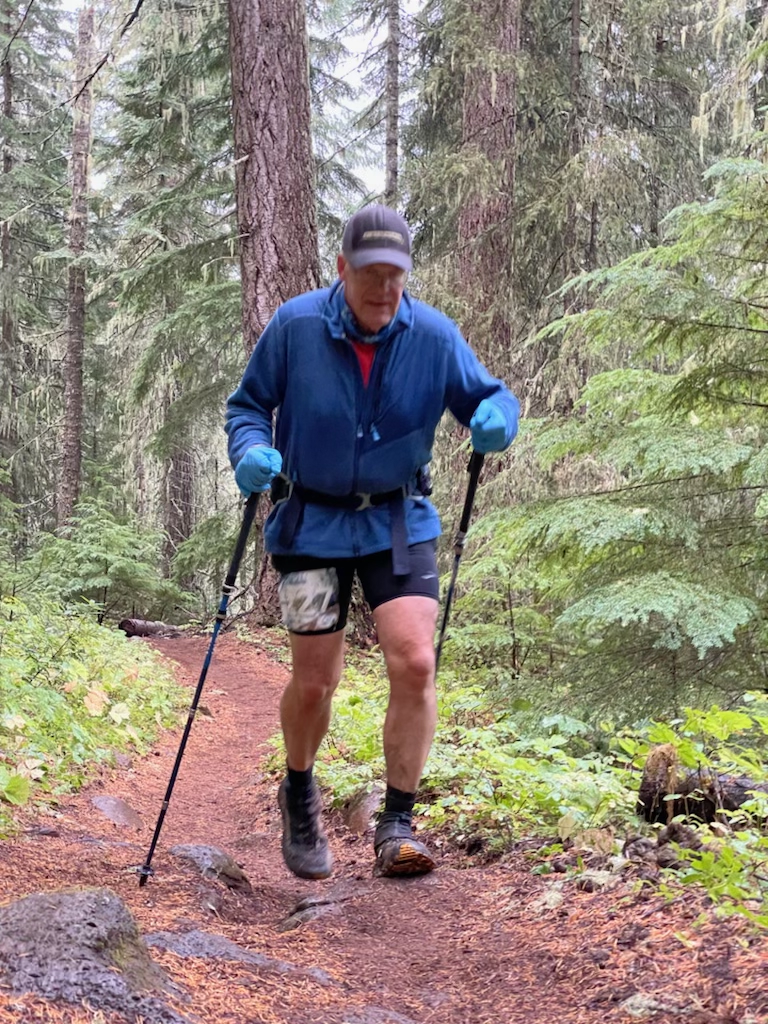

At least I knew I wouldn’t have to compete with the infamous Pacific Northwest rains. Despite the reputation of persistent precipitation, Oregon’s rainy season comes in the late fall and winter.
And that goes to prove just how much I really know. After literally months of dry weather, the rains set in for two days – Sept. 18-19, the race days. As I posted on social media, oh, well, it just adds to the challenge!
The rains rolled in just a few hours before the 8 am start, and they continued off and on for the entirety of the race. The trail filled up with water in certain areas, and in other places, it poured down the slopes like a small river. But unlike the Missouri dirt, the duff in Oregon did not get slick – and that was a blessing.
From the start at the Historic Clackamas Ranger Station, the route wound its way north, past Timothy Lake, reaching a turnaround near Frog Lake.
It’s funny how an ultra resets your perspective.
In training and other races, reaching the 31-mile mark can seem like a major milestone. Normally, I’d be beat by that time. At Mountain Lakes, it seemed more like the start of the challenge.
With a 50K in the rearview mirror, I found myself back at where it all began. Now this aid station served as the last chance to get resupplied by your crew before the (more or less) halfway point. And with night approaching, I grabbed my headlamps and poles, swapped out my shirt and coat and headed out.
The rain, which had let up for a bit, returned as we started to lose daylight. So I pulled out my super high-tech rainwear: a 35-gallon garbage bag. I got a few odd looks as I pulled into the first few aid stations wearing a garbage bag. But as the night progressed, the aid station volunteers were handing out garbage bags, too.
The Mountain Lakes course never gets too high – topping out at about 5,200 feet or so. But as the rain and wind picked up, it was plenty cold. My watch recorded temps in the low 40s, but the wind chill was substantially lower.
I had been running with a new friend, Sean Remington, since early in the race. We were keeping the same pace, and we both enjoyed the extra company on the dark, lonely stretches of the course.
As we neared the Pinheads aid station (mile 49), we crossed an open stretch – and the wind and rain chilled to the bone. After a longer-than-usual stop to enjoy the propane heaters, we couldn’t put off the inevitable any longer, and we headed back out.

The conditions seemed even worse – or maybe it was just leaving the shelter of the aid station tent. But we discussed hypothermia as a possibility. “Let’s give it another mile,” we decided, and by the time we had been on the trail that long again, we had warmed up. Plus the out-and-back turnaround was only 7 miles away.
Seeing my crew – wife Barb and friends Kristi Stein and Kathy and Mike Klauser – buoyed my spirits considerably at Olallie Meadows (mile 57). Dry clothes, a new headlamp, chicken soup and a Coke can do wonders for the spirits, particularly at 10:30 at night and 12 ½ hours into a race.
Sean and I kept a steady pace throughout the night. I had my watch set to give me an average pace for the race, and the average pace for my current mile. It would take an 18-minute average pace for 100 miles to beat the final cutoff, and throughout the night, we stayed in the 15:30/mile range.
The 5 miles from Warm Springs to Red Wolf were some of the most physically taxing. Not only was it 2 or 3 in the morning, but the climb seemed never-ending.
At mile 83, I picked up my pacer, Gretchen Ammerman, who worked with me in Lincoln City. She proved to be the perfect partner for the last miles: she was encouraging, patient and, when asked, would carry on a conversation to keep me awake.
There were two times that I had doubts about finishing: trudging uphill near the Warm Springs aid station and limping along the last 20 miles. My feet had been soaked for 24 hours, and I had developed some major blisters on the balls on my feet. Upon finishing, I’d find out that there were blisters all over my toes, too, but the pain from the bottoms of my feet masked that discomfort.
I’m never a fast runner, but I had slowed to a shuffle in those last miles. But, as long as I kept moving forward, a shuffle would be enough to meet the last cutoff. I had spent too many hours training and I had shared my goals with too many people to be stopped this late in the game.
As I neared the finish line, I dreamt of executing the ultrarunner’s equivalent of a mic drop, shouting, “I made it! I’m retired!”
But as so often happens, the pain and doubts of the last miles fade, and instead of “retiring” from ultraruns, I’m signed up for another 50-miler, and I’m mulling ways to meet another audacious goal.
I’m a firm believer that it takes a village to make an ultrarunner. Without my wife’s help and encouragement, I’d never meet these crazy goals.
And I have some of the best friends. Kristi Stein drove all the way from Phoenix to lend a helping hand. Kathy and Mike Klauser endured a camping adventure just so they could follow me around the woods and make the effort bearable. And I’d tackle another big race just to spend more time on the trail with Gretchen.
Thank you all.
A big shoutout to race directors and Go Beyond Racing owners Renee and Todd Janssen.
The 2020 fires left so much uncertainty about the 2021 race, but they were persistent and flexible, and pulled off a great race on a slightly revised course.
I got a kick out of the pre-race video on the race’s Facebook page. For months, the weather had been ideal, and in the week before the race, the rain forecast was freaking out a number of runners. Renee calmly reassured everyone, emphasizing that our pre-race preparation would carry us through to the end.
We were so impressed by the Janssens that Barb and I are returning for the Wy’east Wonder in 2022.
If you get a chance to run a Go Beyond race, do it.
You don’t finish one of these big adventures without being a bit self-centered. Barb found a way to turn this on its head.
She used this 100-mile race and the 100th anniversary of the Keokuk Rotary Club as an excuse for a fund-raiser. I’m the CEO of the Hoerner YMCA in Keokuk, and she created a fund-raiser that would benefit the local YMCA and the local Rotary club.
Her hustle for pledges and persistent marketing generated $2,200 for Rotary and more than $14,000 for the YMCA!
